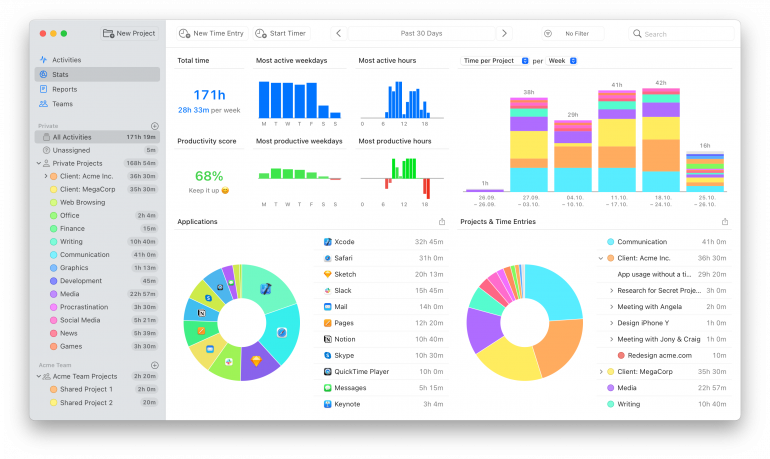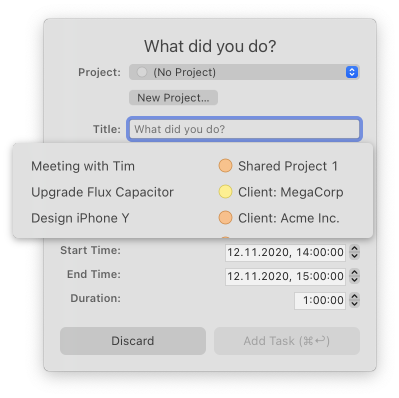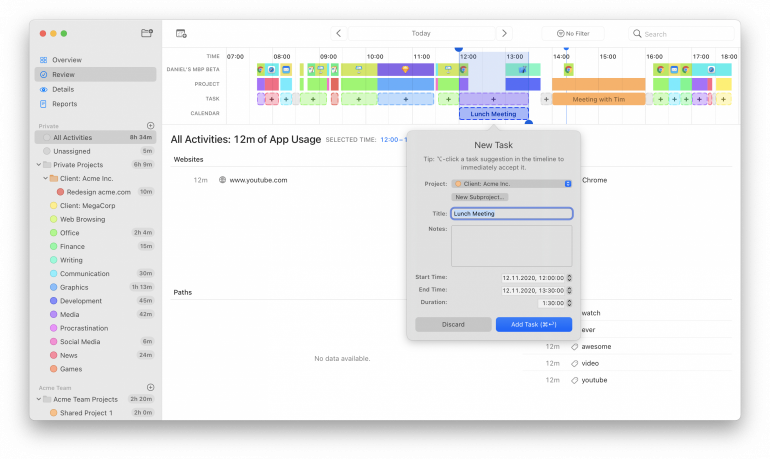How Work Breaks Help to Boost Focus and Productivity

Image: Brooke Cagle
Contemporary work culture tends to glorify busyness. We often feel pressured into working constantly, pausing only to lament how few hours there are in the day. But our frantic schedules tend to neglect one important fact: working incessantly isn’t sustainable. It isn’t healthy and it doesn’t result in good quality work. In fact, part of working hard — and well — involves integrating work breaks into our day.
This may seem counterintuitive at first, especially if you’re struggling to get on top of your workload and meet your deadlines. You need to work more, not less, right? Not necessarily. Scheduling 10 to 15-minute breaks throughout your day can actually help you get more done, more quickly. Breaks can boost your productivity, improve your creativity, and prevent you from experiencing productivity-killing burnout.
Here, we take a look at the benefits of work breaks, the different types you can take, and why burnout is such a big deal. We also offer a practical solution to help you step away from your desk from time to time.
Table of Contents
Why Work Breaks are Important
“I’m too busy to take a break,” we tell ourselves. In the panic of the moment, time not working feels like an idle and unjustifiable indulgence. But our brains aren’t designed to concentrate for extended periods. In fact, most studies suggest that we can only really focus for between 10 and 50 minutes at a time. Beyond that, we might not necessarily be doing valuable work.
Let’s take a look at a few of the most important benefits of scheduling breaks:
It helps you process and retain information
Allowing your brain to shift between focused and unfocused periods gives it the chance to absorb what you’ve been thinking about and retain it. Taking a step back strengthens the connections between neurons in the brain, which aids memory.
Some studies on mice have shown that they were able to remember what they had learnt better if they were given longer breaks between their learning periods. This applied both during daily experiments, and over the course of several days.
It helps you make better decisions
“Sleep on it” is great advice, and it’s regularly dispensed for a reason. When you’re tired, it can be hard to make a decision. What’s more, the daily demands of making countless decisions can lead to decision fatigue. This can make it challenging to see the answers to important issues clearly.
Metaphorically or literally sleeping on something allows you to see it objectively and to come to more level-headed conclusions. Whether you’re setting a rate for a new client, or exploring ways to bill your time better, taking breaks during your decision-making processes can ensure your final choice is the right one.
It generates more “aha” moments
“Aha” moments are the instances of inspiration and clarity that help you achieve breakthroughs during your workday. If you work as a creative, this might be coming up with a great campaign idea. If you’re a CEO, it might be achieving some insight on your company’s next steps.
These ideas don’t come when we’re tired, stressed and overworked, however. Instead, they’re likely to arrive when we lift ourselves out of a mental swamp and come up for air. (There’s a reason why waterproof notepads are a thing — you’re not alone if you have some of your best ideas in the shower.)
It improves your focus
Psychology professor Alejandro Lleras has discussed a phenomenon called Troxier Fading. It refers to the fact that giving continual attention to a stationary object in your peripheral vision causes the item to disappear. He believes the same applies to our thinking life. Too much focus on one task, and the task will “disappear,” making it difficult to resolve or move forward.
“We propose that deactivating and reactivating your goals allows you to stay focused,” Lleras says. “From a practical standpoint, our research suggests that, when faced with long tasks (such as studying before a final exam or doing your taxes), it is best to impose brief breaks on yourself. Brief mental breaks will actually help you stay focused on your task!”
It helps you be more creative
In order for creativity to thrive, you need mental freedom. You need to have the energy and inclination to play, to push boundaries, to explore and experiment. Pressured environments only thwart this process.
Research has shown that consciously scheduling breaks to refresh your thinking can help you be more creative. The advice is that you should set time aside at regular intervals, and that using a time management tool (like Timing!) can help.

Image: Brooke Cagle
10 Types of Work Breaks
If you’re not used to taking working breaks, it can be difficult to know what to do. So, how do you occupy this time so that you reap the benefits? Here are a few options for you. While some are obvious, others are less so.
-
Take a power nap
If you’re feeling tired, listen to your body and rest. There’s been substantial research on the importance of napping. A nap shorter than 30 minutes can help you feel more awake, see the bigger picture, and improve your productivity for the rest of the day. -
Go for a walk
You’ve probably heard this one before, but its benefits are enormous. A walk outside reduces stress levels, boosts your alertness, and the fresh air and vitamin D can help to improve your sleep, too. Keep your sneakers next to your desk to remind you to get out of the house every day. -
Drink water and eat nutritious food
It’s amazing how easy it is to forget even the most critical things when we’re busy. If you find you’re hungry when you take a break, have some brain food on standby. Think nuts, blueberries, avocado, even dark chocolate. And keep those glasses of water coming — aim for eight a day. -
Meditate
Just 10 minutes of mindfulness a day can help you regulate your emotions, improve your mental flexibility, and help you to be less impulsive. It’s also been linked to better leadership capabilities. -
Practice mindful breathing
You could also simply step away from your desk and be conscious of your breath. Try the 4-7-8 technique. Breathe in through your nostrils for 4 seconds, hold it for 7 seconds, and release for a full 8 seconds through your mouth. A few rounds of this can help reduce feelings of stress and anxiety, and re-center you mentally. -
Stretch
Take a break from your sedentary position at your desk (which can wreak havoc on your back and neck), and do some light stretching. Try doing lunges, stretching your hamstrings, and rolling your neck gently from side to side. -
Care for your eyes
Many of us stare at screens all day. The 20-20-20 rule suggests that we take a 20-second break every 20 minutes by staring at something 20 feet away. -
Do nothing
This one isn’t as easy as it sounds. But simply sitting and letting your mind wander can help your brain’s default mode network take over. This gives your overworked prefrontal cortex a break, allowing you to return to your work feeling refreshed. -
Talk to someone
Engaging with other people releases a lot of great hormones. Serotonin, dopamine, oxytocin and endorphins are all there. If you work asynchronously, reach out to someone on the phone. If you’re in an office, invite a colleague to have a quick cup of coffee. -
Pretend to be someone else
Don’t laugh — we’re serious! Studies suggest that taking on a new identity (for a moment or two) can help you solve creative problems. Walk around your room, talk to yourself from a different perspective, and see what comes out. Pretending to be an eccentric poet, educational psychologists Denis Dumas and Kevin Dunbar found, gave people new ideas they might not have had otherwise.
There’s no one-size-fits-all approach to work breaks. You’ll likely need to incorporate a variety into your schedule depending on how you’re feeling and what you would like your beak to achieve.

Image: Susanna Marsiglia
Work Breaks Prevent Burnout
Burnout has been declared an official medical diagnosis by the World Health Organization. It’s defined as a syndrome “resulting from chronic workplace stress that has not been successfully managed.” It often manifests as physical, mental and emotional exhaustion that makes it difficult to get work done. In one survey, 77% of respondents reported experiencing burnout in their current job. And more than half said they’d experienced it more than once.
Wondering if you’re burnt out? If you are, you might be experiencing some of the following symptoms:
- Disillusionment
- Frustration
- Hopelessness with your work
- Incurable fatigue
- Depression
- Insomnia
- Forgetfulness
- Loss of appetite
While you may think that the only antidote to burnout is several weeks on a tropical island surrounded by novels and cocktails. The reality is that you need a more sustainable and consistent solution. Integrating scheduled short breaks throughout your day can help prevent you from reaching breaking point.
It’s important to rest and re-center regularly. Remember that you are a human and not a machine. If you need help with burnout, turn to a professional. Speaking to a therapist can help.

Image: Ayo Ogunseinde
How to Schedule Work Breaks Wisely
By now, it should be clear that taking breaks can help you become a better worker and a healthier person. But this process requires discipline and intentionality. An effective, restorative break isn’t a few minutes scrolling through social media, or zoning out while sifting through your inbox. Instead, a break is a deliberate, well-planned space where you take care of your mind and body during your workday.
Use Timing to schedule breaks
You don’t want to take a break in the middle of a creative flow, or during your most productive work hours. Rather, you want to take a break when you’re likely to become distracted, or when your body naturally signals for you to stop working.
Timing can help you to monitor natural lags in productivity. In the Stats tab, for example, you’ll see that your most productive hours are displayed in a green bar graph in the central column. This will help you identify when you’re most focused and productive — and when you may need to call it quits for a few minutes. In the instance below, there’s a lull over lunchtime and in the late afternoon.

If your graph shows a lunchtime energy lapse, try scheduling a 30-minute break so that you can reboot your brain. Half an hour might sound like a long time, but if the rest of your afternoon is focused and productive, it’ll be worth it. Remember that shorter, regular breaks, at least every hour, are a good idea, too.
Monitor the breaks that work best — and stay accountable
Ask yourself what you’ll need at any given time. Is it a nap or an invigorating walk? You might feel differently from day to day. Meditating regularly can help you feel more in touch with what your body needs.
If you enable idle time detection in preferences, Timing will ask you what you’ve been doing while you’ve been away from your laptop. You could use this to monitor which types of breaks you use most often, and which are the most beneficial. For example, are you especially productive after you do some breathing exercises? Or do you do focused work best after having a power nap?

You can also use the calendar function in Timing to set specific time aside for your breaks. First, schedule time for your breaks in your Mac calendar app. Timing will then integrate these breaks into your timeline, and will indicate whether you’ve adhered to them. If you’ve stayed away from your computer to work on a painting for 20 minutes, it will show no computer activity. It’s a useful way to stay accountable to yourself.
You don’t just deserve a break — you need it. You’ve got to let your brain regenerate its mental reserves.

A Final Word on Work Breaks and Time Management
There’s no reason to feel guilty for taking breaks. Work breaks are an important strategy for helping you to work better and more productively, without compromising your health. When you schedule breaks strategically, you’ll produce better work more efficiently, and you’ll be healthier in the process.
To ensure that you’re taking breaks wisely, use Timing to see how your time usage is affected by a couple of 10 to 15 minute daily breaks. You may even see that you’re able to produce better work by giving yourself a few minutes of freedom. Find out more by downloading Timing’s free 30-day trial today.
Work Breaks: Frequently Asked Questions
What are the benefits of taking regular work breaks?
While it might be counterintuitive, scheduling breaks at work can help you stay focused, improve your productivity, boost your creativity, and improve your mental health and sense of well-being.
How many work breaks should I take during the day?
Most people can only concentrate for between 10 and 50 minutes at a time. After that, you should stand up and step away from your desk, even if only for 5 to 10 minutes. Try and take a dedicated lunch break if you can. If you need to be reminded to get up, you might find the Pomodoro Technique useful.
How can I make the most of my work breaks?
Don’t use your breaks as an opportunity to pick up another device. Your phone or the TV aren’t going to help your brain relax. Instead, find practices that detach you from the task at hand. Stretching, meditating, going for a walk, even doing the dishes can all serve as worthwhile breaks. Remember to schedule breaks at times when your productivity generally lapses. Giving yourself a break when you need it will help to improve your focus in the long run.
